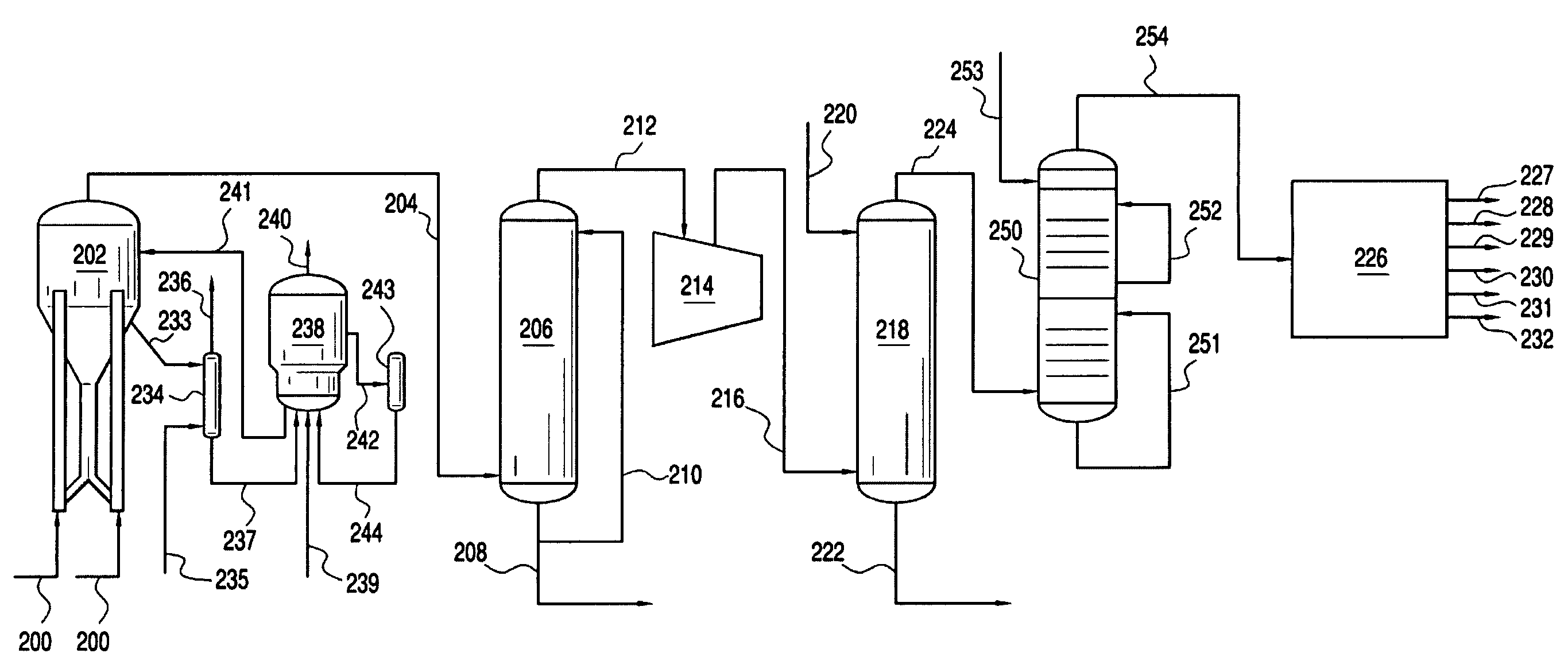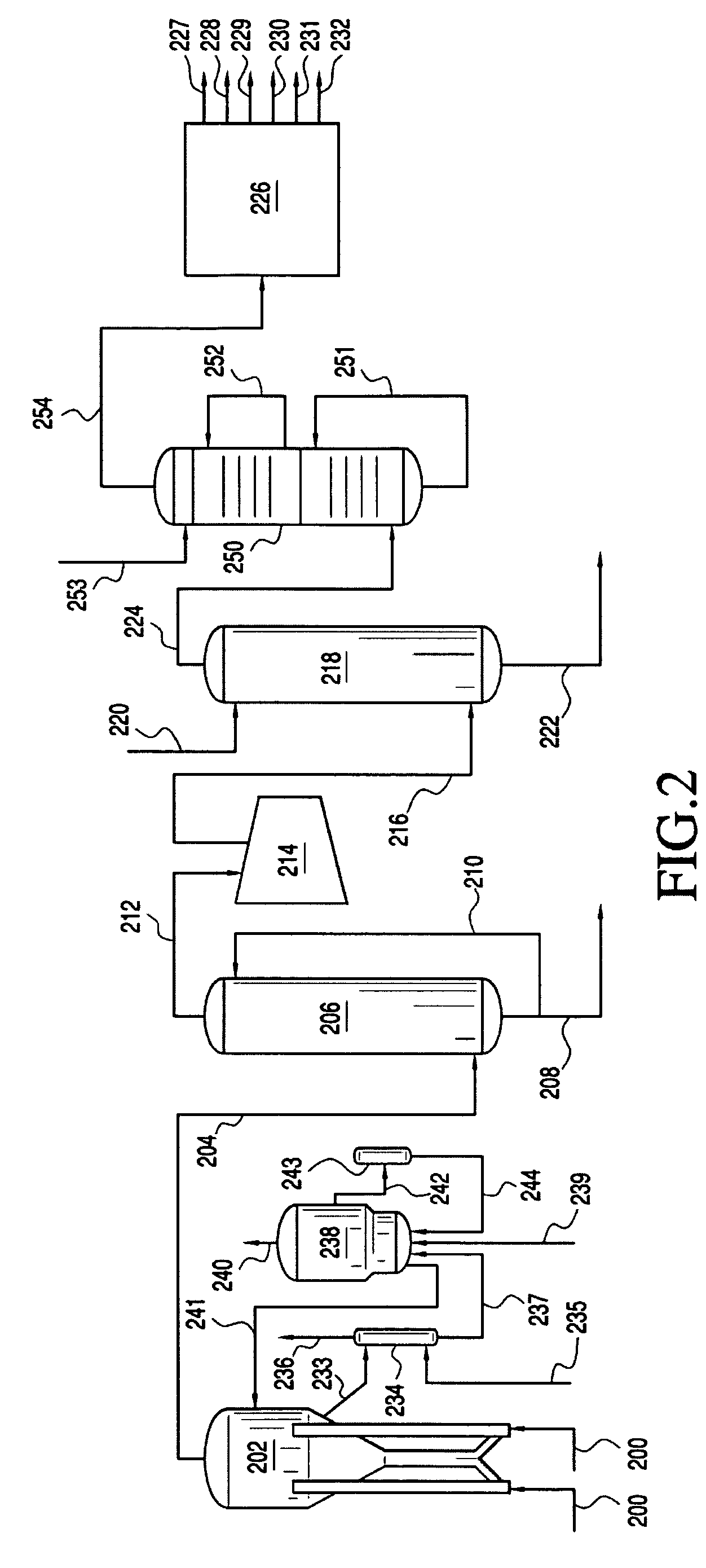Removing carbon dioxide from an oxygenate to olefins reaction effluent
a technology of oxygenate and olefin, applied in the direction of hydrocarbon from oxygen organic compounds, chemistry apparatus and processes, organic chemistry, etc., can solve the problems of difficult separation, further processing and separation of ethylene and propylen
- Summary
- Abstract
- Description
- Claims
- Application Information
AI Technical Summary
Benefits of technology
Problems solved by technology
Method used
Image
Examples
Embodiment Construction
A. INTRODUCTION
[0022] The present invention provides processes for removing carbon dioxide from an effluent stream. Preferably, the effluent stream is derived from an oxygenate to olefins (OTO) reaction system, most preferably a methanol to olefins (MTO) reaction system. The inventive process comprises removing the carbon dioxide in two stages.
[0023] In a preferred embodiment, the inventive process includes a step of providing an effluent stream, which comprises greater than about 100 vppm CO2. The effluent stream contacts a first CO2 removal medium, preferably comprising caustic, in a first CO2 removal zone under conditions effective to remove a first portion of the CO2 from the effluent stream and form a first CO2 depleted stream comprising less CO2 than was present in the effluent stream, preferably from about 0.5 to about 200 vppm CO2. The first CO2 depleted stream then contacts a second CO2 removal medium in a second CO2 removal zone under conditions effective to remove a seco...
PUM
| Property | Measurement | Unit |
|---|---|---|
| weight percent | aaaaa | aaaaa |
| weight percent | aaaaa | aaaaa |
| weight ratio | aaaaa | aaaaa |
Abstract
Description
Claims
Application Information
 Login to View More
Login to View More - R&D
- Intellectual Property
- Life Sciences
- Materials
- Tech Scout
- Unparalleled Data Quality
- Higher Quality Content
- 60% Fewer Hallucinations
Browse by: Latest US Patents, China's latest patents, Technical Efficacy Thesaurus, Application Domain, Technology Topic, Popular Technical Reports.
© 2025 PatSnap. All rights reserved.Legal|Privacy policy|Modern Slavery Act Transparency Statement|Sitemap|About US| Contact US: help@patsnap.com



